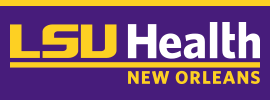Event Website
https://publichealth.lsuhsc.edu/honorsday/2022/
Start Date
2-4-2024 9:00 AM
Description
Background: Human Papillomavirus (HPV) is a risk factor for cervical cancer, especially oncogenic or high-risk HPVs (HR-HPVs). In our previous study, four dietary antioxidants (vitamin A, B2, E, and folate) have shown a protective effect on HR-HPV infection among women. These dietary antioxidants are affected by diet, but cannot directly reflect eating patterns. In addition, associations between dietary patterns and genital HPV infection in women are understudied. Therefore, this study aims to evaluate associations between healthy eating patterns and genital HPV infection in women. Method: The study included 10543 women aged 18-59 years from the 14-year (2003-2016) National Health and Nutrition Examination Survey. The major predictors were components of the Health Eating Index (HEI), and the outcome variable is the vaginal HPV infection status (HPV-negative, low-risk HPV, and HR-HPV). The HEI 2015-version score with a range of 0-100 was calculated, with 13 diet components aligned with key recommendations of the Dietary Guidelines for Americans. A higher HEI score indicates a better diet quality. Associations between the HEI scores and HPV infections were evaluated using the survey weighting multinomial logistic regression adjusting for 9 potential confounding factors. Results: A lower intake of greens/beans and fruits was associated with a higher risk of genital HR-HPV infection based on the adjusted models. Lower intake of dairy products, whole grains were associated with a higher risk of LR-HPV. Overall, a higher eating quality would lead to a lower risk of HR-HPV infection. Conclusion: This study showed that healthy eating (such as a high intake of fruit, green vegetables, and dairy products) could provide a protective effect on vaginal HR-HPV infection for women. These findings agreed with our former finding of the protective effect of dietary antioxidants on genital HPV infection among women.
Recommended Citation
Lin, Hui-Yi; Fu, Quifan; Kao, Yu-Hsiang; Tseng, Tung-Sung; Reiss, Krzysztof; Cameron, Jennifer E.; Ronis, Martin J.; Su, Joseph; Nair, Navya; Chang, Hsiao-Man; and Hagensee, Michael E., "Health Eating Associated HPV Infection in Women" (2024). School of Public Health Delta Omega Honors Day Poster Sessions. 2.
https://digitalscholar.lsuhsc.edu/dohd/2022/2022/2
Health Eating Associated HPV Infection in Women
Background: Human Papillomavirus (HPV) is a risk factor for cervical cancer, especially oncogenic or high-risk HPVs (HR-HPVs). In our previous study, four dietary antioxidants (vitamin A, B2, E, and folate) have shown a protective effect on HR-HPV infection among women. These dietary antioxidants are affected by diet, but cannot directly reflect eating patterns. In addition, associations between dietary patterns and genital HPV infection in women are understudied. Therefore, this study aims to evaluate associations between healthy eating patterns and genital HPV infection in women. Method: The study included 10543 women aged 18-59 years from the 14-year (2003-2016) National Health and Nutrition Examination Survey. The major predictors were components of the Health Eating Index (HEI), and the outcome variable is the vaginal HPV infection status (HPV-negative, low-risk HPV, and HR-HPV). The HEI 2015-version score with a range of 0-100 was calculated, with 13 diet components aligned with key recommendations of the Dietary Guidelines for Americans. A higher HEI score indicates a better diet quality. Associations between the HEI scores and HPV infections were evaluated using the survey weighting multinomial logistic regression adjusting for 9 potential confounding factors. Results: A lower intake of greens/beans and fruits was associated with a higher risk of genital HR-HPV infection based on the adjusted models. Lower intake of dairy products, whole grains were associated with a higher risk of LR-HPV. Overall, a higher eating quality would lead to a lower risk of HR-HPV infection. Conclusion: This study showed that healthy eating (such as a high intake of fruit, green vegetables, and dairy products) could provide a protective effect on vaginal HR-HPV infection for women. These findings agreed with our former finding of the protective effect of dietary antioxidants on genital HPV infection among women.
https://digitalscholar.lsuhsc.edu/dohd/2022/2022/2


